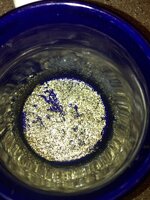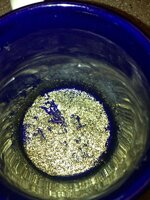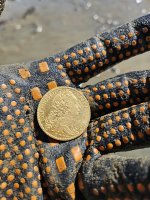chriseneim
Sr. Member
- May 5, 2013
- 342
- 146
My qes is I have soaked this in HCL and it seems to get even more bright after. I am new to panning and really confused as to if gold should be more yellow or if this is possibly gold flakes or just a bunch of mica. I would really love some help as to what to look for when panning and what real gold will look like in pan compared to pyrite or mica. I know most mica and pyrite will burn off when in HCL but I don't want to jump the gun and say I got gold when really it's just a bunch of junk. I have at least 50 lbs of the dirt and black sand this came from and would love some tips. Thanks guys.
Amazon Forum Fav 👍
Attachments
Upvote
0







